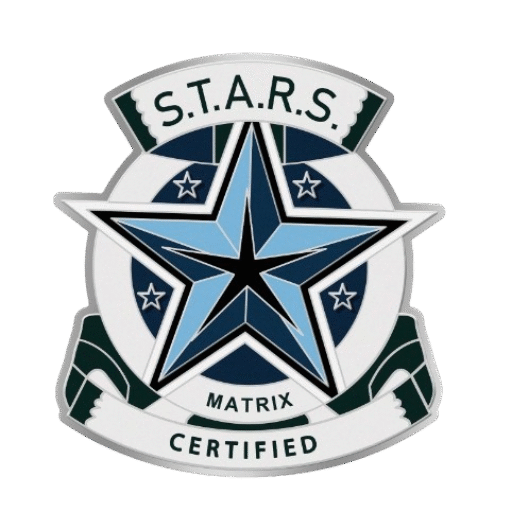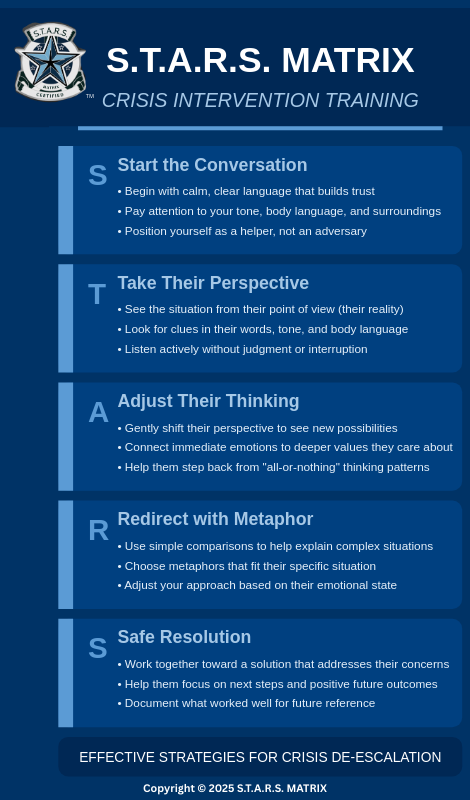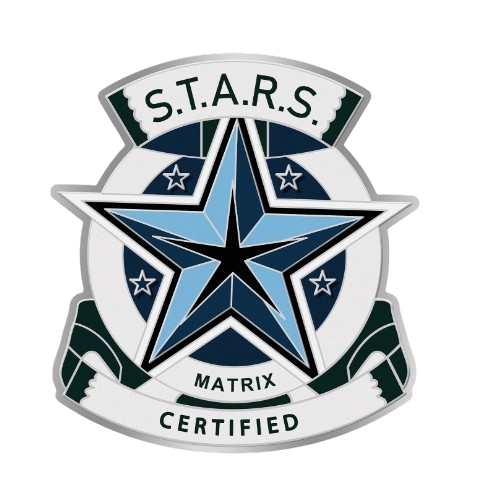About S.T.A.R.S. Matrix
Framework Overview
STARS stands for the following:
- S - Start the conversation
- T - Take Their Perspective
- A - Adjust their Thinking
- R - Redirect with metaphor
- S - Safely Exit

Scientific Foundation

The framework's scientific foundation includes
- Functional Behavior Assessment: Applying ABA methodology to identify the function of problematic behavior and develop function-based interventions
- Functional Contextual Analysis: Understanding how language functions differently in various contexts and psychological states
- Stimulus Equivalence and Derived Relational Responding: Leveraging learned and derived associations to facilitate communication even when rational processing is impaired
- Verbal Behavior Analysis: Identifying patterns in subject communication that indicate escalation or de-escalation based on Skinner’s analysis of verbal behavior
- Psychological Flexibility: Developing the ability to adapt communication approaches in real-time based on behavioral cues
- Trauma-Informed Communication: Recognizing and accounting for how past trauma affects current behavior and interactions
- Rule-Governed Behavior: Understanding how verbal rules affect compliance and resistance in high-stress situations
- Establishing Operations and Motivating Operations: Identifying and manipulating variables that temporarily alter the effectiveness of reinforcers and punishers during crisis interactions
Differentiation
Beyond Basic De-escalation
Integration of the 5-Step Aggression System
Bidirectional Flexibility
Complementary Rather Than Replacement
Mental Health Integration
Applied Behavior Analysis and RFT Integration

Crisis Communication Challenges
Why Traditional Approaches Often Fall Short
- Commands increase resistance in emotionally disturbed individuals
- Stress impairs cognitive function in both officers and subjects
- Standard protocols may escalate rather than de-escalate certain situations
- One-size-fits-all approaches fail to address unique situational factors
How S.T.A.R.S. Addresses These Challenges
The S.T.A.R.S. Matrix addresses these challenges with adaptive techniques that respond to the psychological realities of crisis encounters. Our framework provides officers with multiple communication pathways based on behavioral cues, environmental factors, and subject presentation.
By understanding how language functions during crisis, officers can select communication strategies that achieve compliance without unnecessary escalation.
Integration with Existing Protocols
S.T.A.R.S. is designed to work seamlessly with your department’s current training and protocols:
- Use-of-Force Continuums: Enhances existing use-of-force decision-making models with additional communication options
- Constitutional Policing: Aligns with constitutional policing standards and supports procedural justice
- Documentation Practices: Supports defensible documentation practices with clear decision points
- Department Values: Reinforces department values and mission by prioritizing safe resolutions
S.T.A.R.S. Matrix™ and all associated logos, frameworks, methodologies, training systems,
AI analysis platforms, and supporting materials are protected trademarks and copyrights
of Alcohol Drug Assessment Center, PLLC. This website, including all text, graphics,
screenshots, dashboards, training materials, and software interfaces, is protected by
United States and international copyright laws.
